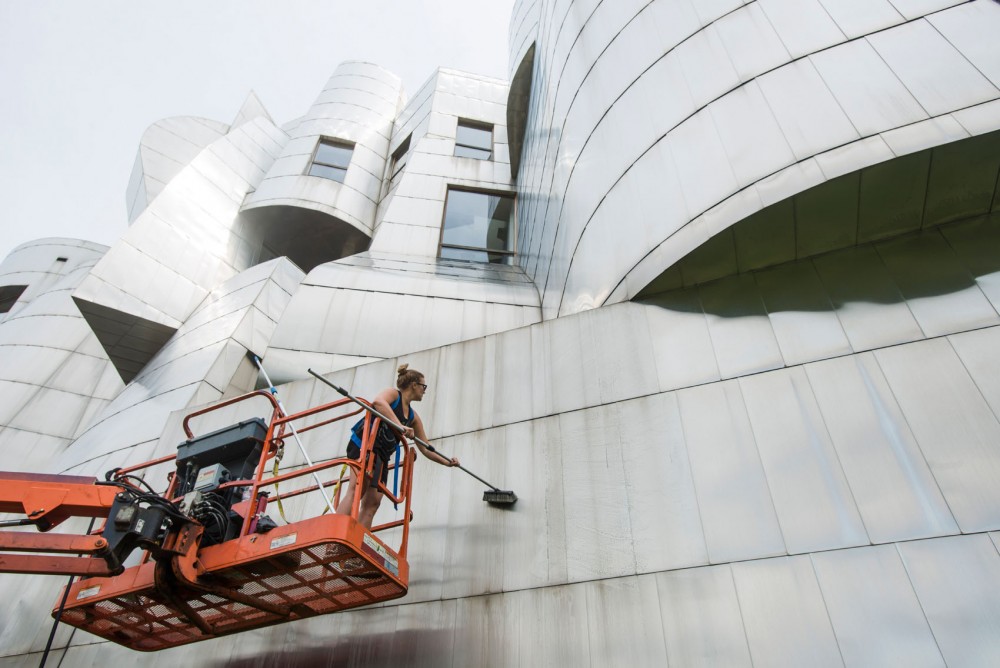It’s supposed to bring waterfalls and fish to mind, though for some it’s just the stuff of nightmares.
The Weisman Art Museum, finished in 1993, was designed by architect Frank Gehry. His profile has since risen dramatically, making the Weisman’s presence a coup for the University of Minnesota. A $14 million expansion, also designed by Gehry, was completed in 2011.
The Weisman’s stainless steel exterior and the matching panels along the Washington Avenue footbridge aren’t different from some kitchen appliances.
Its convoluted metal contortions are just as prone to dirt and grime, with the added curves and twists providing more nooks and crannies that don’t get naturally cleaned with rainwater. Even the areas that do get a rinse when the heavens part still get water stains and streaks.
In spite of its abstract appearance, the Weisman gets cleaned with a mild, diluted detergent once every two years or so.
The strangest part is that it’s done not by a janitorial crew or steel-cleaning specialists, but by the Weisman’s own staff — John Allen, the director of security and building operations, and Emily Foxen, the event coordinator.

The weeklong cleaning process is an in-house cost-saving measure; expenditures come in at around $2,500. Quotes from specialists put the cost of a more professional clean in the tens of thousands.
Since Foxen and Allen are already Weisman employees, the majority of that $2,500 goes towards equipment — mostly the rental of a JLG aerial lift, or cherrypicker.
That’s changed since Allen took over cleaning duties from the previous director, Bill Lampe.
“I’m not as into it as [Lampe],” Allen said. “He liked to rappel down the sides [while cleaning].”
That isn’t to say that Foxen and Allen don’t have fun — the clean is certainly a break from the normal routine.
“I get to work on my tan,” Foxen joked, gesturing to hers of the farmer’s variety.
The museum is reminiscent of a foil reflector around a sunbather’s neck — at that moment, it was easy to see why people were concerned about the Weisman’s potentially blinding effect on motorists when it first opened.
A moot point, as light rail construction has detoured much of the traffic that usually putters by. But the added muck from the construction of the tracks was an added reason to get the scrub brushes out.
There’s no official word other than wait-and-see on whether train traffic will make any difference to the Weisman’s exterior. (The building did undergo vibratory testing to simulate the new rail system with satisfactory results.)
Oh, and for the obsessively-minded: The crooked “k” in the “Frederick R. Weisman” lettering is targeted for a straightening.















